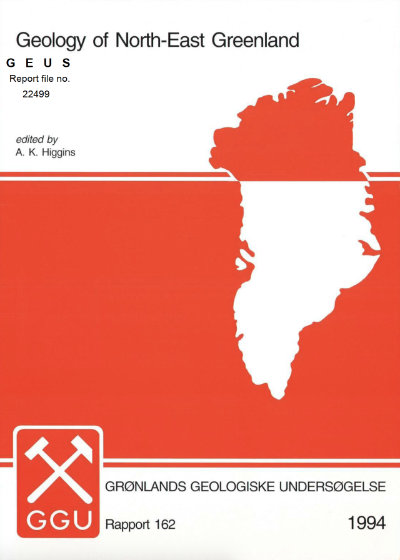Reaction of Precambrian high-grade gneisses to mid-crustal ductile deformation in western Dove Bugt, North-East Greenland
DOI:
https://doi.org/10.34194/rapggu.v162.8248Abstract
Mid-crustal deformation of an Early Proterozoic high-grade gneiss complex in western Dove Bugt gave rise to at least two sets of nappes. Structures in mylonites in low-angle ductile shear zones associated with the younger nappes indicate north-easterly-directed displacements. The nappes and mylonites are folded by upright to inclined folds that verge north-west and which appear to be associated with decollements that dip south-east. Hornblende, sillimanite and anatectic partial melts that developed with the nappes, mylonites and younger folds show that deformation took place under amphibolite facies conditions. Several lines of evidence suggest that the younger nappes, the mylonites and the upright to inclined folds formed during the Caledonian orogeny. Some pre-Caledonian deformation may be represented by the oldest isoclinal folds. Numerous, small-scale, ductile extensional shear zones and more brittIe fractures that were superimposed across the Caledonian structures are believed to have formed during orogen-parallel collapse which may be related IO Devonian basin development farther south in central East Greenland. Younger fauIts and major joints are correlated with Carboniferous, Mesozoic and Tertiary basin development in North-East Greenland.
Downloads
Published
Issue
Section
License
This article is distributed under a CC-BY 4.0 licence, permitting free redistribution and reproduction for any purpose, even commercial, provided proper citation of the original work. Author(s) retain copyright over the article contents.


